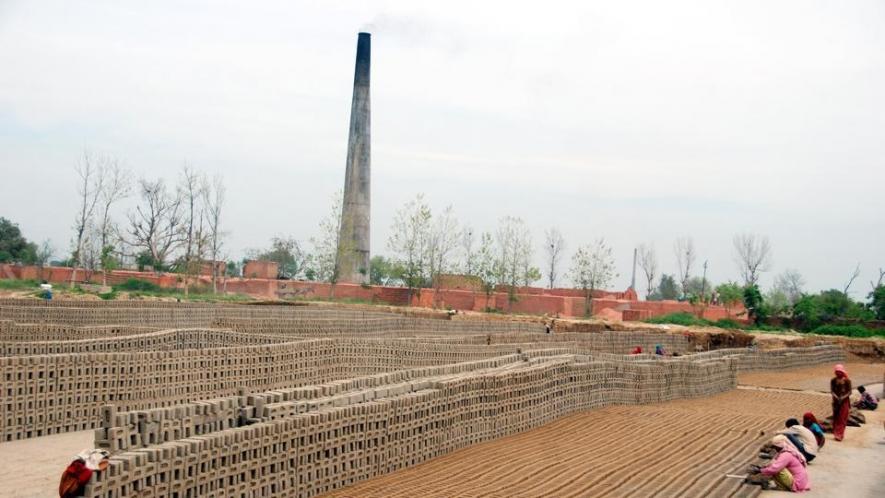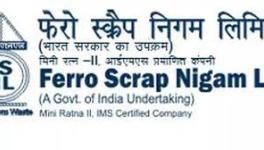Switching from Red Clay to Fire Ash Bricks: Job Loss in Store for Workers?

A 14-year-old girl’s body was found in a charred state last week in Muzaffarnagar near a brick kiln where she worked. Reports suggest that she was raped. Earlier in June, a 22-year-old brick kiln worker in Maharashtra was hacked to death by his contractor for taking an advance amount of Rs. 30,000. In another instance in May this year, 50-year-old Motka Manjhi Mal from Jharkhand lost his life after starving as he worked in the brick kiln. The slew of instances of the loss of the lives of brick kiln workers expose the underbelly of the industry – devoid of social security, regular wages and recognition of the rights of the workers.
On the other hand, Modi government is proposing to overhaul the industry. It plans to shift from the production of the fired clay brick to fly ash bricks. The notification makes it mandatory for all red clay brick kilns located within 300 kilometres of a thermal power plant to convert to fly ash brick kilns.
The most popular type of brick used for construction in India is fired clay brick (also called red clay brick). These bricks are produced from clay by burning them in a kiln. There are other types of bricks, classified as non-fired bricks (e.g. fly ash bricks, concrete blocks), produced from materials such as fly ash, sand, lime, gypsum and cement. Currently, 80% of all the bricks produced in the country are fired clay bricks. The industry is also the fifth largest consumer of coal in the country. It is also a major source of particulate matter (PM) emissions and one of the largest emitters of greenhouse gases like carbon dioxide and black carbon.
In the name of controlling these emissions, in its latest draft notification, dated February 25, 2019, Ministry of Environment, Forest and Climate Change, has mandated that, ‘No new red clay brick kiln shall be installed and operated within 300 km from a coal or lignite based thermal power plant and the existing red clay brick kilns located within 300 km shall be converted into fly ash based bricks or blocks or tiles manufacturing within one year from the date of publication of this notification’.
Questioning the timing of the notification and the proposed policy change, Tapan Sen, general secretary, Centre of Indian Trade Unions (CITU), said, “I suspect that this notification was issued just before the elections to favour the coal and lignite-based private power companies – mainly the Adani Power Limited of Adanis and the Reliance Power Limited of Ambanis; vitiating the entire election process.
He added, “The intent of the notification of putting a total ban on new red clay kiln and converting the existing ones to coal ash brick kilns will lead to job loss of lakhs of unorganised sector brick kiln workers, and will have devastating effect on the economy, after the ill effects of demonetisation and GST.”
He has written to the Ministry: “It appears that the ministry in its hurry has ignored the question of job-losses of such huge number of most underprivileged and has neither taken the opinion of Department of Labour and Employment of the Government nor the recognised Central Trade Unions.”
It further read: “The proposed order aims to overhaul vital issues of ban on red clay brick kiln and conversion of the existing ones to coal ash brick kilns through executive order by amending two decades old draft amendment to fly ash notification and by bypassing the Parliament and necessary amendment in Environment (Protection) Act, 1986. In order to restrict the excavation of topsoil, MoEFCC is promoting the use of fly ash, generated as a waste from coal- and lignite-based thermal power plants (TPPs), for the manufacture of bricks. Fly ash is a by-product of coal after it is burnt at thermal power plants, and is usually dumped at the site or ponds, resulting in groundwater deterioration and air pollution. There has been a significant push for promoting the utilisation of fly ash in brick manufacturing and other construction activity.
In 1999, MoEFCC came out with its first notification on the use of fly ash. This notification mandated that within a radius of 50 km from a coal- or lignite-based TPP, fired clay bricks should only be produced by mixing at least 25% of fly ash. Since then, the notification has been amended thrice—in 2003, 2009 and 2016. In each amendment, the radius around TPPs has successively been increased and so has the percentage of fly ash in the fired clay brick.”
Speaking to NewsClick, Nirmal Gorana of the National Campaign Committee for Eradication of Bonded Labour, said, “The life of working in a brick kiln is the life of modern slavery. Now, the government is planning to target the industry by giving more power to the corporate-owned thermal power plants producing fly ash. For the workers, this would mean a complete change in the production process. It is also going to adversely affect the cost of production.”
Despite the government mandating that thermal power plants supply fly ash free of cost to brick manufacturers at the site, most power plants are not doing this. Brick manufacturers have to pay the contractors and also the cost of transportation.
Gorana added, “The economics of this will mean adverse effects on the lives of the workers, who are used as bonded migrant labourers without wages, living a life of exploitation.”
Though the government has stressed time and again on increasing fly ash utilisation in the country, the manufacturers allege that a situation of "scarcity" is being created by thermal power plants.
According to Down to Earth, because of the frustration among the fly ash brick manufacturers, around 100 units have stopped the work in the last six months in Uttar Pradesh alone.
*This is a developing story
Also read: Time to Free Brick Kiln Workers from Modern Slavery
Get the latest reports & analysis with people's perspective on Protests, movements & deep analytical videos, discussions of the current affairs in your Telegram app. Subscribe to NewsClick's Telegram channel & get Real-Time updates on stories, as they get published on our website.
























